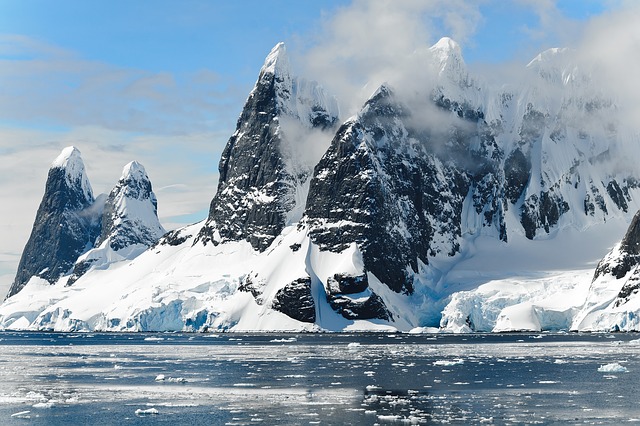Pioneer investors are bringing globalization in the Arctic, in exchange for natural resources and strategic outposts. Is it worth the money?
Arctic temperatures are rising and polar ice is melting, but starved polar bears aren’t the only implication. Oil and gas fields, metals and minerals, new trade routes, fisheries: the world’s northernmost region is home to a pool of resources that are just opening up to exploitation. But at what cost?
A not-so-frozen world
The Arctic is especially sensitive to climate change. In the last thirty years, temperatures have arisen here twice as fast as the rest of the world. In the worst emission scenario, before the middle of the century, the region will be ice-free during summer.
Consequences of ice melting include sea level rise, alteration of the ocean saline level, damage to biodiversity and even interference in global ocean circulation.
What happened in February was a foretaste. Europe was hit by subfreezing weather conditions, while in the Arctic temperatures soared to +2°C. The reason is the weakening of the polar vortex, which usually traps cold air in the Arctic, due to ice loss. How will a warmer Arctic in the future influence weather globally is still to be fully understood, but it is by now evident that “changes that are happening in the Arctic will not stay in the Arctic”.
The polar rush
Changes in the polar region are thus influencing the world, but also attracting attention to uncovering resources and opportunities.
The USGS has assessed that about 30% of the world’s undiscovered gas and 13% of the oil may be found above the Arctic Circle, mainly offshore. Such revelation spurred the interest of the surrounding countries, which are competing to obtain rights to the Arctic continental shelf. To Norway, the Arctic is the most important foreign policy priority, while Russia in 2007 symbolically planted a flag under the North Pole.
An ice-free Arctic would have an enormous geopolitical relevance, being placed at the interconnection of three continents and the Pacific and Atlantic Ocean. The race of Arctic States to modernize their navies and obtain control over new areas is a clear indicator. Even China, that declared itself a “near-Arctic State”, is interested in the Arctic’s strategic position. Shipping through the so-called “Polar Silk Road” could indeed save up to twenty days compared to the traditional route through the Suez Canal.
The Asiatic superpower is attracted also by fossil fuels, minerals and fisheries, and local governments are welcoming investments. It has strengthened cooperation with Russia and is financing energy projects in Siberia, especially after EU and US sanctions. Chinese money is vital to Greenland, which offers in turn uranium, rare earths, iron, gems and hydrocarbons. Development of extraction activities could be the passport to the longed-for independence from Denmark.
But all that glitters is not gold: development could be a boomerang.
The costs of development
Protection of the environment supposedly is a shared concern by all Arctic stakeholders, but it seems incompatible with the exploitation of natural resources.
Oil spills are highly feared: cleaning up is especially complicated by extreme weather, long distances, lack of infrastructure and technical difficulties. There is no real known method to recover oil spilled in the Arctic, and the memory of disasters such as BP Deepwater Horizon and Exxon Valdez is still vivid.
Even if spills could be entirely prevented, extraction of Arctic fossil fuels poses a maybe even greater threat: carbon emissions. Plans for drilling in the Arctic should be altogether abandoned to restrict global warming to less than 2°C, the threshold established by the Paris Agreement. In spite of that, Trump administration recently authorized drilling in Alaska’s National Wildlife Refuge. And he is not alone: in 2016, Russia increased by more than 17% oil production in the Arctic, while in the same year the northernmost offshore oil facility, ENI’s Goliat, started production in Norway’s Barents Sea.
In Northern Europe, some worry that mining activities could lead to destruction of the landscape, toxic waste leakage and air pollution. The possibility of extracting uranium has divided Kvanefjeld community, in Greenland. To local people, economic development would mean money and work in a country that suffers from unemployment and remoteness from modernity. But it would also mean the destruction of their environment and, possibly, identity.
Complexity
It is apparently simple to conclude that the Arctic should be preserved and not exploited. What can money signify compared to the destruction of one of the last wild and scarcely populated regions of the world? But this money means much for Arctic indigenous people: employment, access to technologies, simplification of life in hard environments.
However, there is no guarantee that benefits from exploitation activities will be shared among the population. Many times, in the story of humankind, the contrary has happened: some community is promised development in change of its natural resources, but is left with only pollution and misery.
History seems to repeat itself in the Arctic.














Leave a Comment
Your email address will not be published. Required fields are marked with *